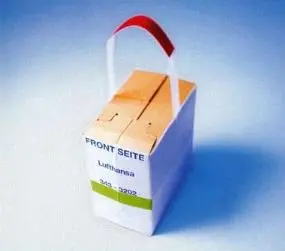As a manufacturer and supplier of plastic packaging, we are very aware of our responsibility when it comes to sustainability and environmental protection.
We are constantly looking for sustainable alternatives to conventional plastic film.
Bioplastics and biofilms are attracting more and more public interest. In recent years, a young and innovative industry has established itself, which is researching to solve the problem of the scarce raw materials. In the meantime, many well-known companies from retail and sales have also become aware of this trend. They are trying to take account of the growing ecological awareness of many people.
However, the question arises as to whether everything that says organic is really organic inside. So let's take a look at the allegedly biological alternatives to conventional plastic film mentioned below and clear up a few existing myths on the subject.
Biofoil is not just biofoil – you should know that
The term biofilm can basically be divided into three categories.
-
Oxo-based films
With these films, a conventional, crude oil-based plastic is mixed with metal salts, which is said to cause the oxo-degradable plastics to completely decompose in the compost. However, this is not true, since the smallest particles, the so-called microplastics, remain. It would therefore be extremely harmful to the environment to dispose of these films in the compost. In any case, you should inform yourself about the actual composition of the films if the compostability of this film is advertised. There is now a strict ban on oxo-degradable plastics in the EU, so it is better not to use these films. -
Bio-based films
Bio-based (bio-based) plastic films are another supposedly biological alternative. You should also take a close look here: bio-based in this context only means that a certain proportion of the ethylene used to manufacture the films comes from renewable raw materials. Starch, sugar and cellulose base from sugar cane are used for this. The rest is regular ethylene derived from crude oil. The percentage composition is also not clearly defined. A proportion of just 20% ethylene from renewable raw materials is sufficient to declare the film as bio-based. Bio-based films are not biodegradable and must not be disposed of as biowaste.
It should also be mentioned that the regenerated material from renewable raw materials obtained during recycling is of significantly poorer quality. This means that the higher the proportion of bio-ethylene, the more material is required to recycle the film. With up to seven possible recycling cycles, this has a very high impact on energy and resource consumption. The suitability for food and the good mechanical properties should not go unmentioned as positive properties. -
Completely biological foils
The last alternative are the completely biological foils. Is that the solution for the future?
These consist of 100% renewable raw materials and are e.g. B. from wheat, potato or corn starch. They can be disposed of as organic waste or as garden compost. Microbiological degradation at temperatures above 60 °C within 6 months to 90% of the mass in carbon dioxide. The films are milky transparent to an opaque appearance. But even this promising approach has its problems. The quality, e.g. B. The tear strength of these biofilms is not good to use them efficiently as shrink films for packaging. Very large areas with monocultures are required for the cultivation of raw materials such as potatoes or corn, which are anything but ecological if you take into account the variety of species or biodiversity. These films are food-safe and are mainly offered as "short-life packaging" for packaging with a short life cycle.
Biofoils in use
From our point of view, none of the alternatives available so far are of high quality and sustainable enough to be able to completely do without the classic plastics. Furthermore, large-scale deforestation of rainforest areas is not a solution for the cultivation of monocultures.
Our own product rLDPE is the best alternative to biofilms. Guaranteed production from sorted production waste for multiple reuse. Responsible disposal makes rLDPE an environmentally friendly alternative to biofilm.








